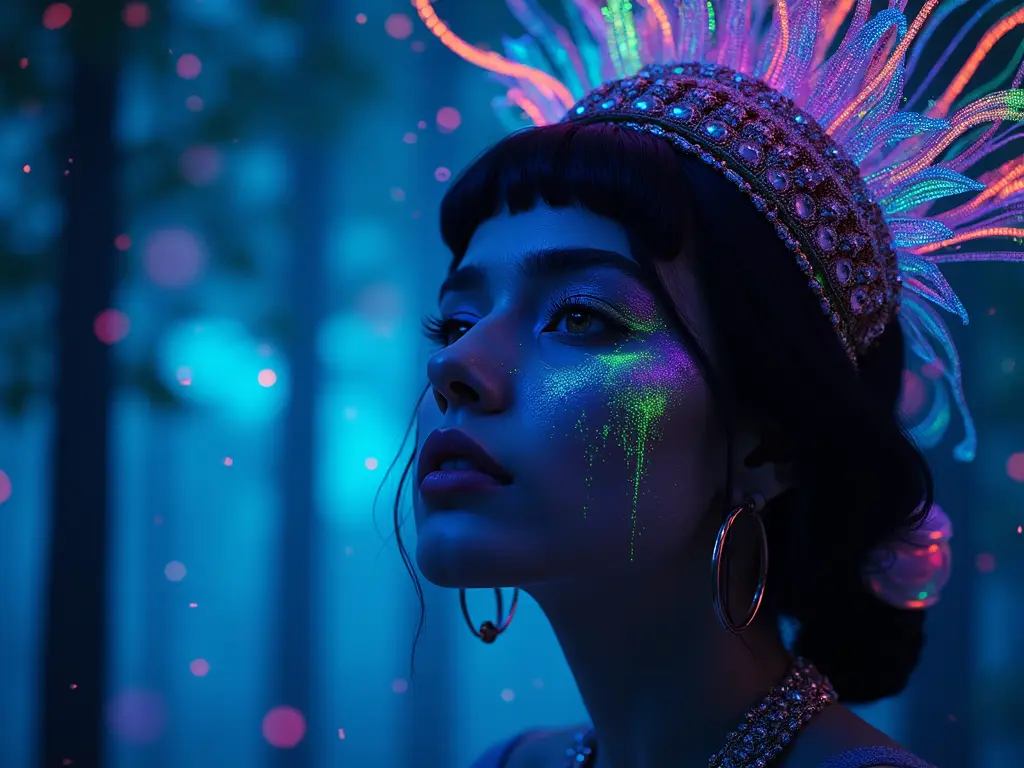Revolutionizing Filmmaking with Unreal Engine: Real-Time Animation Explained
Blog
Apr 17, 2024
What is Real-Time Animation with Unreal Engine?
Filmmaking has traditionally been a time-intensive and resource-heavy process, requiring large crews, complex sets, and extensive post-production. However, with advancements in technology, real-time animation using tools like Unreal Engine is transforming the industry. At FLUX28 STUDIO, we leverage Unreal Engine’s real-time capabilities to create stunning visuals, accelerate production timelines, and offer our clients efficient, high-quality filmmaking solutions.
What is Real-Time Animation with Unreal Engine?
Unreal Engine, developed by Epic Games, is a powerful tool traditionally used in game development. However, it’s now being adopted in the filmmaking world for its real-time rendering capabilities. Unlike traditional animation methods, where each frame is rendered individually—a process that can take hours or even days—Unreal Engine renders animations instantly as you work, providing real-time feedback and adjustments.
This means filmmakers can:
Visualize scenes instantly: Adjust lighting, textures, and camera angles on the fly without waiting for renders.
Speed up production timelines: Real-time rendering significantly reduces the time spent in post-production, allowing for faster project delivery.
Create immersive virtual environments: With Unreal Engine’s capabilities, it’s possible to build expansive digital worlds without the need for physical sets, making it ideal for storytelling that requires fantasy or futuristic landscapes.

How Real-Time Animation Compares to Traditional Filmmaking
Traditional filmmaking, whether live-action or 3D animation, is often bound by time and resources:
Live Action: Requires large crews, location permits, weather contingencies, and extensive setups for each shot. Post-production includes editing, VFX integration, and color grading—all of which are time-consuming and costly.
Traditional 3D Animation: Involves rendering each frame individually, which can take hours per frame, especially when complex lighting or textures are involved.
Unreal Engine, by contrast, allows for the instant creation of digital environments and animations. It’s a versatile solution that merges the control and precision of 3D animation with the speed of live action:
No waiting for renders: By using real-time technology, directors can see how the final shot will look immediately and make adjustments on set, reducing guesswork and post-production delays.
Flexibility: Scenes and environments can be modified in minutes, enabling changes in weather, time of day, and even set design without the need for reshoots or additional resources.
Reduced costs: With fewer physical setups and a streamlined post-production process, real-time animation offers a cost-effective solution for brands and agencies.
Case Study: Real-Time Animation in Port Pink
Our work on the project Port Pink is a prime example of how Unreal Engine can transform the filmmaking process. The project involved creating a fantasy sci-fi world where the protagonist’s journey transcended time and space. To achieve this, we utilized several advanced Unreal Engine features:
Motion Capture Integration: Using the Perception Neuron PN3 suit, we captured live performance data and mapped it directly into Unreal Engine. This allowed us to animate the character’s movements accurately and in real time, enhancing the authenticity and fluidity of the visuals.
Metahuman Rigs: We crafted the main character using Unreal Engine’s Metahuman Creator, a tool that provides highly detailed, customizable digital humans. By using these rigs, we could control every aspect of the character’s facial expressions and body movements, creating a lifelike performance that blended seamlessly with the digital environment.
Custom Procedural Shaders: To bring the sci-fi aesthetic of Port Pink to life, we developed custom procedural shaders directly within Unreal Engine. This allowed us to add visual effects, such as cel-shading and solid color 3D elements, that were adjusted dynamically, giving the scenes a unique, animated look inspired by a mix of A Scanner Darkly and anime styles.
The Future of Filmmaking: Advantages of Real-Time Animation
Real-time animation with Unreal Engine is more than just a technological advancement—it’s a paradigm shift in how stories are told and produced. Here’s why it’s becoming an industry standard:
Creative Freedom: With real-time rendering, filmmakers and brands have the freedom to visualize and adapt scenes instantly. This opens up opportunities for experimentation, ensuring the final output aligns perfectly with the creative vision.
Scalability: Whether it’s a small-scale project or a full-blown feature, real-time animation can scale to meet the requirements, allowing for both quick social media campaigns and immersive long-form content.
Cost and Time Efficiency: By minimizing the need for extensive post-production work and physical setups, real-time animation reduces both production costs and timelines, making high-quality animation accessible to a wider range of brands and agencies.
Why Choose Real-Time Animation for Your Brand?
As brands increasingly seek innovative ways to connect with their audiences, real-time animation offers an opportunity to create immersive, engaging content faster than ever before. Whether it’s an interactive virtual tour, a dynamic social media campaign, or a complex brand film, the flexibility and speed of real-time animation with Unreal Engine ensure that your vision can be brought to life efficiently.
If you’re interested in leveraging the power of real-time animation to create cutting-edge visuals for your next campaign, FLUX28 STUDIO is here to help. With expertise in motion capture, 3D modeling, and the full capabilities of Unreal Engine, we deliver high-quality projects tailored to your brand’s needs.
Let’s work together to transform your vision into reality with the latest in animation technology. Contact us today to explore the possibilities!




